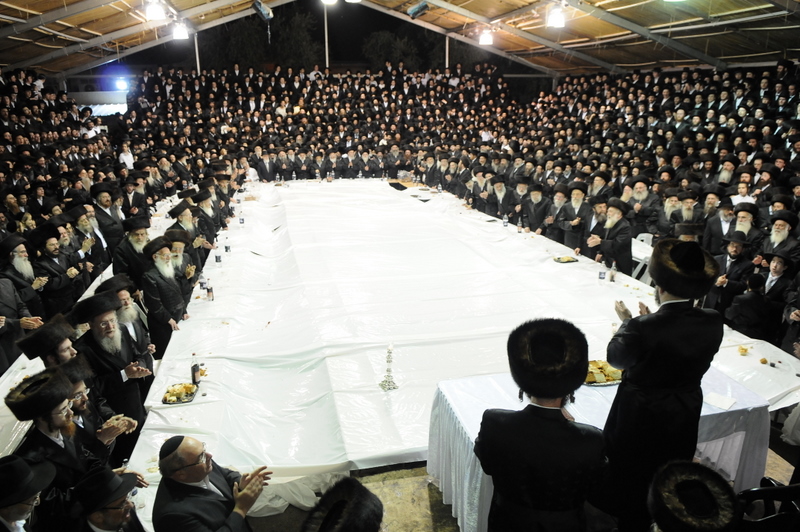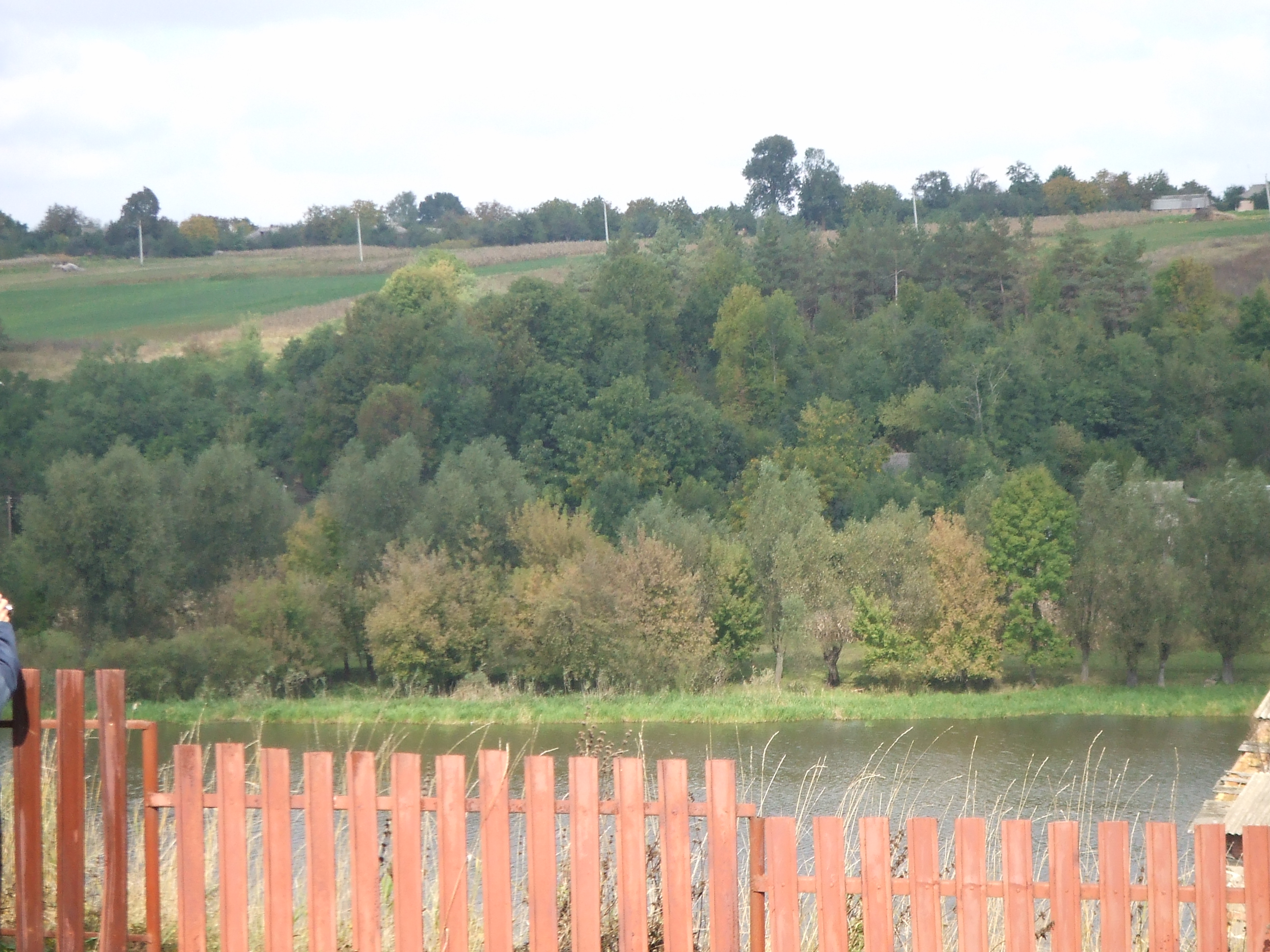|
Moshe Breslover
Moshe Breslover was the nickname given to Rabbi Moshe Lubarski (c. 1825 – 1890?), one of the closest disciples of Nathan of Breslov ("Reb Noson"), who in turn was the closest disciple of Rebbe Nachman of Breslov. After Reb Noson's death in 1844, Lubarski became a leading figure in the Breslover community and taught many people, including Rabbi Shimshon Barski and Rabbi Yisroel Halpern. Biography According to Breslover tradition, Lubarski and his brother, Reb Zanvil, were born as a result of a blessing that Reb Noson gave to their childless mother. She & her husband took care of one of the mikvahs in the town of Breslov, Ukraine. They often provided warm water and towels for Reb Noson to use each night when he arose for Tikkun Chatzot (the Midnight Lament). During the 1830s, when opposition against Reb Noson flared in the town of Breslov, Reb Noson's opponents tried to stop the caretakers from assisting him. They refused, which led to a boycott of their mikvah and resultant finan ... [...More Info...] [...Related Items...] OR: [Wikipedia] [Google] [Baidu] |
Nathan Of Breslov
Nathan of Breslov (January 22, 1780 – December 20, 1844), also known as Reb Noson, born Nathan Sternhartz, was the chief disciple and scribe of Rebbe Nachman of Breslov, founder of the Breslov (Hasidic dynasty), Breslov Hasidic dynasty. Reb Noson is credited with preserving, promoting and expanding the Breslov movement after the Rebbe's death. Rebbe Nachman himself said, "Were it not for Reb Noson, not a page of my writings would have remained." Spiritual seeker Reb Noson was born in the town of Nemyriv, Ukraine. His father, Rabbi Naphtali Hertz Sternhartz, was a Talmudic scholar of some distinction and a wealthy businessman. His mother's name was Chaya Laneh. Reb Noson was the firstborn of his family; he had three brothers — Reb Yudel, Reb Yosef, and Reb Leibush — and one sister, whose name is not known. Reb Noson received a traditional Torah education and learned his father's business. At the age of 13 (as was the custom), he married Esther Shaindel, daughter of Rabbi Dovid ... [...More Info...] [...Related Items...] OR: [Wikipedia] [Google] [Baidu] |
Tcherin
Chyhyryn ( uk, Чигирин, ) is a city and historic site located in Cherkasy Raion of Cherkasy Oblast of central Ukraine. From 1648 to 1669 the city was a Hetman residence. After a forced relocation of the Ruthenian Orthodox metropolitan see from Kyiv in 1658, it became a full-fledged capital of the Cossack Hetmanate. Chyhyryn also became a traditional place for the appointment to the office of Hetman of Zaporizhian Host. It hosts the administration of Chyhyryn urban hromada, one of the hromadas of Ukraine. Population: Names Chyhyryn ( uk, Чигирин; Turkish: ''Çigirin'' or ''Çehrin''; russian: Чигирин) pl, Czehryń). Location The city is on the banks of Tiasmyn River and lies at an altitude of 124 metres above mean sea level. Minor industries, such as food and furniture factories, are the basis of the town economy in the 21st century. History The area (1320–1569) had been part of the Grand Duchy of Lithuania. It was ceded to the Polish–Li ... [...More Info...] [...Related Items...] OR: [Wikipedia] [Google] [Baidu] |
Hasidic Rabbis In Europe
Hasidism, sometimes spelled Chassidism, and also known as Hasidic Judaism (Ashkenazi Hebrew: חסידות ''Ḥăsīdus'', ; originally, "piety"), is a Judaism, Jewish religious group that arose as a spiritual revival movement in the territory of contemporary Western Ukraine during the 18th century, and spread rapidly throughout Eastern Europe. Today, most affiliates reside in Israel and the United States. Israel Ben Eliezer, the "Baal Shem Tov", is regarded as its founding father, and his disciples developed and disseminated it. Present-day Hasidism is a sub-group within Haredi Judaism and is noted for its religious conservatism and social seclusion. Its members adhere closely both to Orthodox Judaism, Orthodox Jewish practice – with the movement's own unique emphases – and the traditions of Eastern European Jews. Many of the latter, including various special styles of dress and the use of the Yiddish language, are nowadays associated almost exclusively with Hasidism. Hasi ... [...More Info...] [...Related Items...] OR: [Wikipedia] [Google] [Baidu] |
Ukrainian Orthodox Rabbis
Ukrainian may refer to: * Something of, from, or related to Ukraine * Something relating to Ukrainians, an East Slavic people from Eastern Europe * Something relating to demographics of Ukraine in terms of demography and population of Ukraine * Something relating to Ukrainian culture * Ukrainian language, an East Slavic language, the native language of Ukrainians and the official state language of Ukraine * Ukrainian alphabet, a Ukrainian form of Cyrillic alphabet * Ukrainian cuisine See also * Languages of Ukraine * Name of Ukraine * Ukrainian Orthodox Church (other) * Ukrainians (other) * Ukraine (other) * Ukraina (other) * Ukrainia (other) Ukrainia may refer to: * The land of Ukraine, the land of the Kievan Rus * The land of the Ukrainians, an ethnic territory * Montreal ''Ukrainia'', a sports team in Canada * Toronto ''Ukrainia'', a sports team in Canada See also * * Ukraina ... * {{disambiguation Language and nationality ... [...More Info...] [...Related Items...] OR: [Wikipedia] [Google] [Baidu] |
19th-century Rabbis From The Russian Empire
The 19th (nineteenth) century began on 1 January 1801 ( MDCCCI), and ended on 31 December 1900 ( MCM). The 19th century was the ninth century of the 2nd millennium. The 19th century was characterized by vast social upheaval. Slavery was abolished in much of Europe and the Americas. The First Industrial Revolution, though it began in the late 18th century, expanding beyond its British homeland for the first time during this century, particularly remaking the economies and societies of the Low Countries, the Rhineland, Northern Italy, and the Northeastern United States. A few decades later, the Second Industrial Revolution led to ever more massive urbanization and much higher levels of productivity, profit, and prosperity, a pattern that continued into the 20th century. The Islamic gunpowder empires fell into decline and European imperialism brought much of South Asia, Southeast Asia, and almost all of Africa under colonial rule. It was also marked by the collapse of the lar ... [...More Info...] [...Related Items...] OR: [Wikipedia] [Google] [Baidu] |
Breslov Rabbis
{{Disambig ...
Breslov may refer to: *Bratslav, a town in modern Ukraine *Breslov (Hasidic group) ** Breslov Research Institute, a publisher of classic and contemporary Breslov group texts in English See also * Breslau (other) Breslau is the pre-1945 German name of Wrocław, Poland. Breslau may also refer to: * Breslau, Ontario, Canada * Breslau, Nebraska, U.S. * Lindenhurst, New York or Breslau, New York, U.S. * Breslau, Texas, U.S. * SMS ''Breslau'', a ship of th ... [...More Info...] [...Related Items...] OR: [Wikipedia] [Google] [Baidu] |
Breslov (Hasidic Dynasty)
Breslov (also Bratslav, also spelled Breslev) is a branch of Hasidic Judaism founded by Rebbe Nachman of Breslov (1772–1810), a great-grandson of the Baal Shem Tov, founder of Hasidism. Its adherents strive to develop an intense, joyous relationship with God, and receive guidance toward this goal from the teachings of Rebbe Nachman. The movement has had no central, living leader for the past 200 years, as Rebbe Nachman did not designate a successor. As such, they are sometimes referred to as the טויטע חסידים (the "Dead Hasidim"), since they have never had another formal Rebbe since Nachman's death. However, certain groups and communities under the Breslov banner refer to their leaders as "Rebbe". The movement weathered strong opposition from virtually all other Hasidic movements in Ukraine throughout the 19th century, yet, at the same time, experienced growth in numbers of followers from Ukraine, Belarus, Lithuania, and Poland. By World War I, thousands of Breslo ... [...More Info...] [...Related Items...] OR: [Wikipedia] [Google] [Baidu] |
Breslov Research Institute
Breslov Research Institute is a publisher of classic and contemporary Breslov texts in English. Established in 1979, BRI has produced the first English translation of all the works of Rebbe Nachman of Breslov (1772–1810) and selected works of Reb Noson (1780–1844), the Rebbe's closest disciple; studies of the Rebbe's teachings on individual subjects; contemporary Breslov biographies; and self-help books which apply Rebbe Nachman's teachings to daily life. BRI currently has over 100 titles in print, many of which it has also translated into Hebrew, Spanish, Russian and French. BRI maintains offices in Jerusalem and New York City. History The founding of Breslov Research Institute was an outgrowth of the outreach work of Rabbi Zvi Aryeh Rosenfeld, who is credited with bringing the teachings of Rebbe Nachman to American shores beginning in the late 1940s. While Rabbi Rosenfeld primarily taught students in the New York area and recorded his lectures on tape, he encouraged one of ... [...More Info...] [...Related Items...] OR: [Wikipedia] [Google] [Baidu] |
Born To Die
''Born to Die'' is the second studio album and major-label debut by American singer-songwriter Lana Del Rey. It was released on January 27, 2012, through Interscope Records and Polydor Records. The album was reissued on November 9, 2012, as an expanded version subtitled '' The Paradise Edition''. Before the album's release, Del Rey had attracted attention with her 2011 singles "Video Games" and " Born to Die", which contrasted contemporary electronic/dance music with their cinematic sound accompanied by dramatic string instruments. A predominantly baroque pop and trip hop album, ''Born to Die'' features the same cinematic composition. The lyrics are about love, sex, and drugs, and features prominent references to 1950s and 1960s Americana. The album was the world's fifth best-selling album of 2012, and had sold over 7 million copies by 2014. In 2021, it became the second album by a woman and the first debut album by a woman to spend more than 400 weeks on the US ''Billboard'' ... [...More Info...] [...Related Items...] OR: [Wikipedia] [Google] [Baidu] |
Nachman Of Breslov
Nachman of Breslov ( he, רַבִּי נַחְמָן מִבְּרֶסְלֶב ''Rabbī'' ''Naḥmān mīBreslev''), also known as Reb Nachman of Bratslav, Reb Nachman Breslover ( yi, רבי נחמן ברעסלאווער ''Rebe Nakhmen Breslover''), and Nachman from Uman (April 4, 1772 – October 16, 1810), was the founder of the Breslov Hasidic movement. Reb Nachman, a great-grandson of the Baal Shem Tov, revived the Hasidic movement by combining the esoteric secrets of Judaism (the Kabbalah) with in-depth Torah scholarship. He attracted thousands of followers during his lifetime, and his influence continues today through many Hasidic movements such as Breslov Hasidism. Reb Nachman's religious philosophy revolved around closeness to God and speaking to God in normal conversation "as you would with a best friend". The concept of ''hitbodedut'' is central to his thinking. Biography Reb Nachman was born on April 4, 1772 ( Rosh Chodesh of Nisan) in the town of Międzybóż, wh ... [...More Info...] [...Related Items...] OR: [Wikipedia] [Google] [Baidu] |
Boycott
A boycott is an act of nonviolent, voluntary abstention from a product, person, organization, or country as an expression of protest. It is usually for moral, social, political, or environmental reasons. The purpose of a boycott is to inflict some economic loss on the target, or to indicate a moral outrage, to try to compel the target to alter an objectionable behavior. The word is named after Captain Charles Boycott, agent of an absentee landlord in Ireland, against whom the tactic was successfully employed after a suggestion by Irish nationalist leader Charles Stewart Parnell and his Irish Land League in 1880. Sometimes, a boycott can be a form of consumer activism, sometimes called moral purchasing. When a similar practice is legislated by a national government, it is known as a sanction. Frequently, however, the threat of boycotting a business is an empty threat, with no significant effect on sales. Etymology The word ''boycott'' entered the English language dur ... [...More Info...] [...Related Items...] OR: [Wikipedia] [Google] [Baidu] |
Tikkun Chatzot
Tikkun Chatzot ( he, תקון חצות, lit. "Midnight Rectification"), also spelled Tikkun Chatzos, is a Jewish ritual prayer recited each night after midnight as an expression of mourning and lamentation over the destruction of the Temple in Jerusalem. It is not universally observed, although it is popular among Sephardi and Hasidic Jews. Origin of the custom The Talmudic sages wrote that every Jew should mourn the destruction of the Temple. The origin of the midnight time for prayer and study lies in Psalm 119:62, attributed to David: "At midnight I will rise to give thanks unto thee." It is said that David was satisfied with only "sixty breaths of sleep" (Sukk. 26b), and that he rose to pray and study Torah at midnight. At first, Mizrahi Jews would add dirges (''kinnot'') for the destruction only on the three sabbaths that are between the Seventeenth of Tamuz and Tisha B'Av, and not on weekdays. After discussions that questioned this practice of mourning specifically on the ... [...More Info...] [...Related Items...] OR: [Wikipedia] [Google] [Baidu] |



2.jpg)

